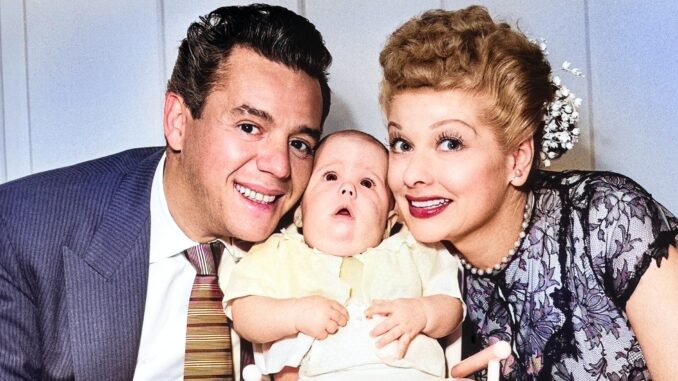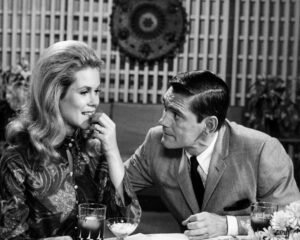
Introduction
Ever noticed a strange sense of déjà vu while watching classic TV? If you’ve seen both I Love Lucy and Bewitched, you might have caught a few similarities. That’s no coincidence. The connection lies with William Asher, a prolific producer and director who played a significant role in shaping both shows. Asher’s influence made Bewitched a success, but it also led to plotlines that felt eerily familiar to fans of I Love Lucy. Let’s dive into how this happened and explore why the overlap isn’t as scandalous as it seems.
The William Asher Connection
Who Was William Asher?
William Asher wasn’t just any TV producer. He was a legend in the industry, credited with directing more than 100 episodes of I Love Lucy before taking the reins as the producer of Bewitched. His knack for comedy and sharp timing helped define the golden age of television.
From Lucy to Samantha
When Asher transitioned from I Love Lucy to Bewitched, he didn’t leave his creative toolbox behind. He brought his experience, his comedic timing, and—apparently—a few plotlines.

How ‘Bewitched’ Borrowed From ‘I Love Lucy’
The Similarities in Storylines
Fans of both shows have pointed out undeniable overlaps. For example:
- In I Love Lucy, Lucy’s schemes often backfired hilariously. Similarly, Samantha’s magical mishaps in Bewitched followed the same comedic formula.
- Episodes involving nosy neighbors like Ethel Mertz (I Love Lucy) and Gladys Kravitz (Bewitched) served as key comedic elements in both series.
Recycling or Reinventing?
Some might call it recycling, but others argue that Asher reinvented these plotlines to fit Bewitched’s unique premise. By incorporating magic into everyday scenarios, Asher added a fresh twist to familiar comedic beats.
Key Episodes That Mirror Each Other
Lucy’s Vitameatavegamin vs. Samantha’s Potion
Who can forget Lucy’s disastrous Vitameatavegamin commercial? In Bewitched, Samantha’s spells often led to similarly chaotic results, like potions gone wrong. Both scenarios left viewers in stitches while highlighting the lead character’s charm.
Ricky Ricardo vs. Darrin Stephens
Both I Love Lucy and Bewitched featured a husband trying to keep his wife’s antics under control. Ricky struggled with Lucy’s schemes, while Darrin dealt with Samantha’s witchcraft. The dynamic created endless comedic opportunities.
Ethel and Gladys: The Nosy Neighbor Trope
Ethel Mertz was always in on Lucy’s plans, often reluctantly. Meanwhile, Gladys Kravitz from Bewitched was more of a skeptic, constantly spying on Samantha’s magical mishaps. Both characters added an extra layer of humor.
Why Did Asher Borrow These Ideas?
A Proven Formula
Asher knew what worked. I Love Lucy was a groundbreaking success, and its humor resonated with audiences. By reusing elements of its formula, Asher ensured Bewitched had a familiar yet fresh appeal.
The Pressure to Succeed
Television in the 1960s was fiercely competitive. Borrowing tried-and-true concepts from I Love Lucy wasn’t just a creative choice—it was a strategic move to keep audiences hooked.
Building on What He Knew
Having directed so many iconic episodes of I Love Lucy, Asher naturally drew inspiration from his own work. It wasn’t about copying but rather building upon a legacy.
The Legacy of Both Shows
Timeless Appeal
Despite the similarities, both I Love Lucy and Bewitched have stood the test of time. Each show brought something unique to the table—I Love Lucy with its slapstick humor and Bewitched with its magical charm.
Influence on Modern TV
The comedic structures and character dynamics pioneered by these shows continue to influence sitcoms today. From Friends to Modern Family, echoes of I Love Lucy and Bewitched can be seen in countless series.
The Debate: Homage or Imitation?
Critics’ Perspective
Some critics argue that Asher leaned too heavily on I Love Lucy’s success, blurring the line between homage and imitation.
Fans’ Take
Most fans, however, view the similarities as endearing rather than problematic. After all, both shows brought joy to millions, and their overlap only deepens their shared legacy.
How ‘Bewitched’ Innovated Despite Borrowing
The Magical Element
While I Love Lucy relied on everyday scenarios, Bewitched introduced supernatural twists. This innovation set it apart, giving Asher room to experiment within a familiar framework.
Samantha’s Empowerment
Unlike Lucy, who often played the role of a mischievous housewife, Samantha was a more empowered character. Her magical abilities allowed her to solve problems in ways Lucy never could.
Conclusion
The shared DNA between I Love Lucy and Bewitched is undeniable, but it’s also a testament to William Asher’s genius. By blending the humor of one beloved classic with the whimsy of another, he created a recipe for success that still resonates today. Whether you see it as borrowing or innovating, there’s no denying the enduring charm of both shows.
FAQs
1. Did William Asher really copy plotlines from I Love Lucy for Bewitched?
While similarities exist, it’s more accurate to say Asher adapted elements from I Love Lucy to fit Bewitched’s unique premise.
2. Why are the two shows so similar?
Both shows share William Asher’s creative influence, which naturally led to some overlap in comedic style and plotlines.
3. How did Bewitched innovate beyond I Love Lucy?
Bewitched introduced a magical element that allowed for more fantastical and creative storylines.
4. Was William Asher involved in other TV classics?
Yes, Asher worked on numerous successful shows, solidifying his status as a television pioneer.
5. Are there other shows that borrowed from I Love Lucy?
Many sitcoms have drawn inspiration from I Love Lucy, as it set the standard for comedic storytelling in television.
